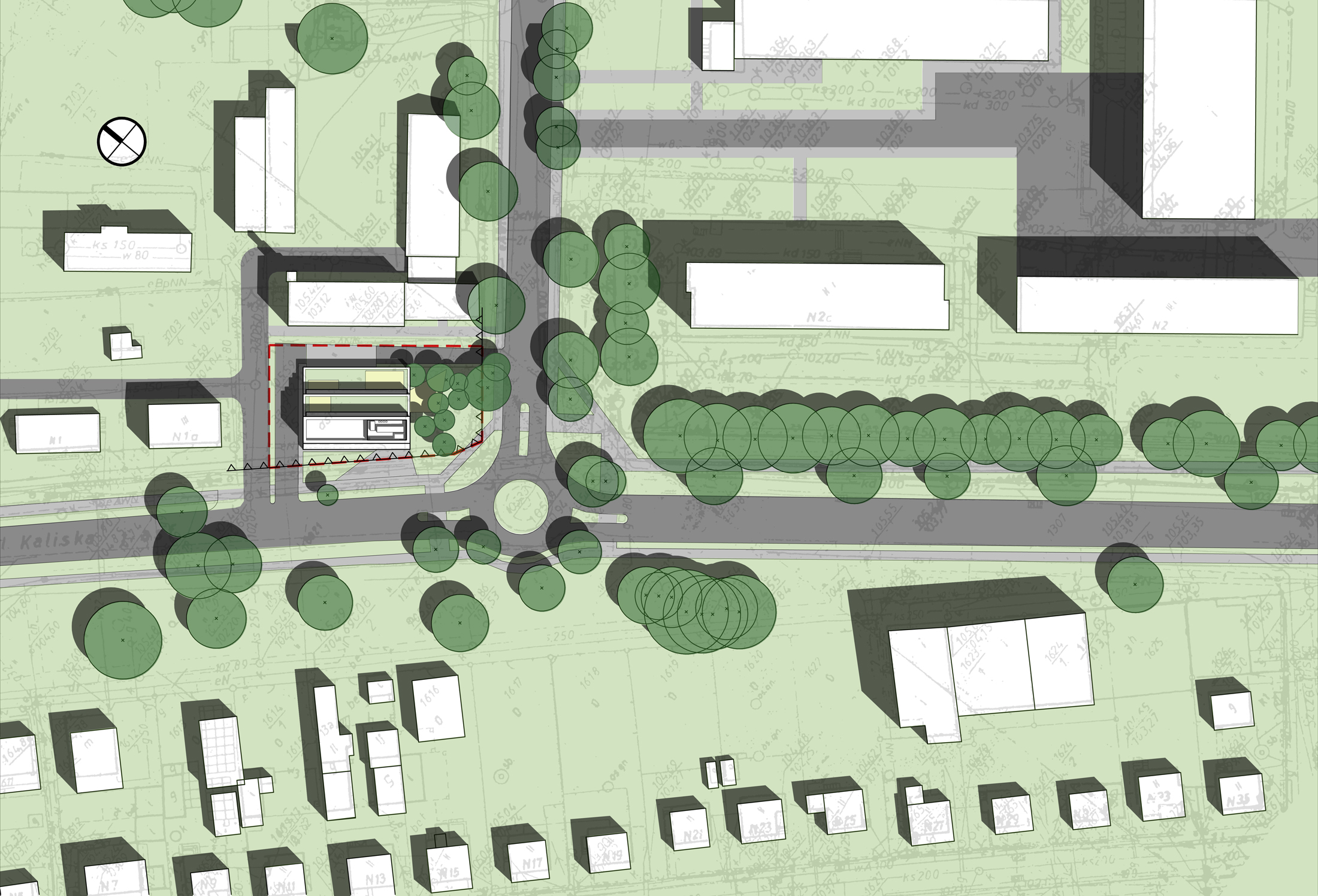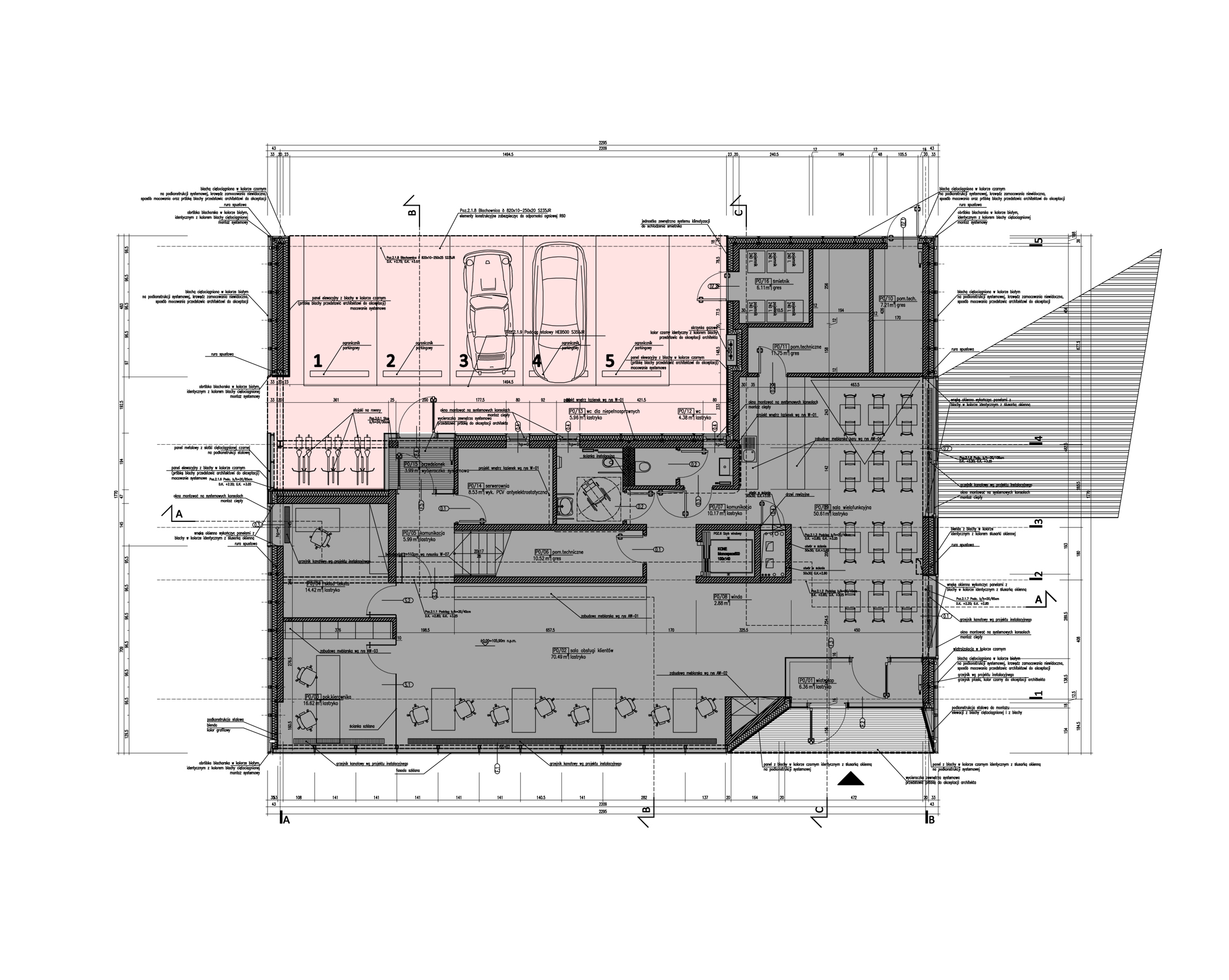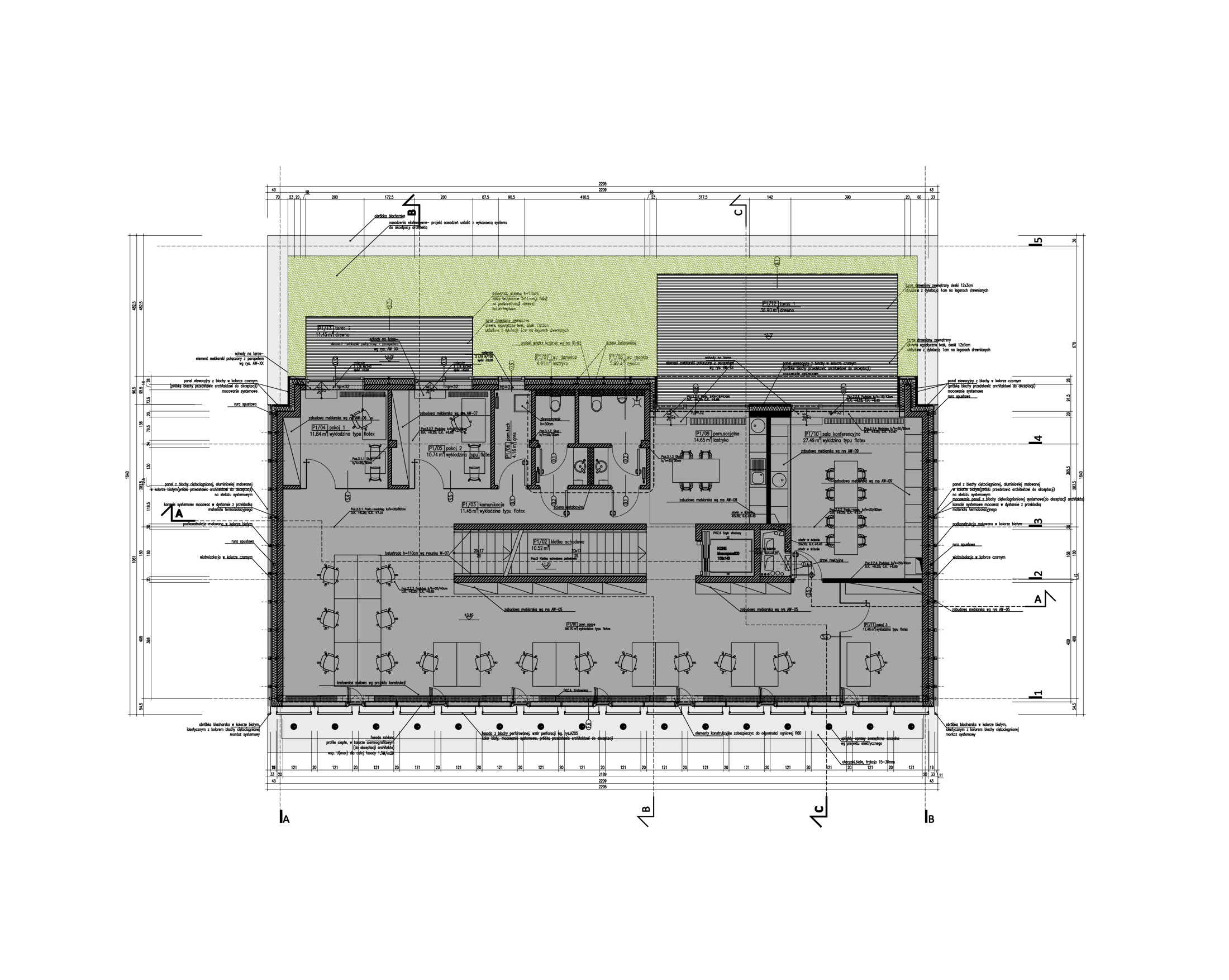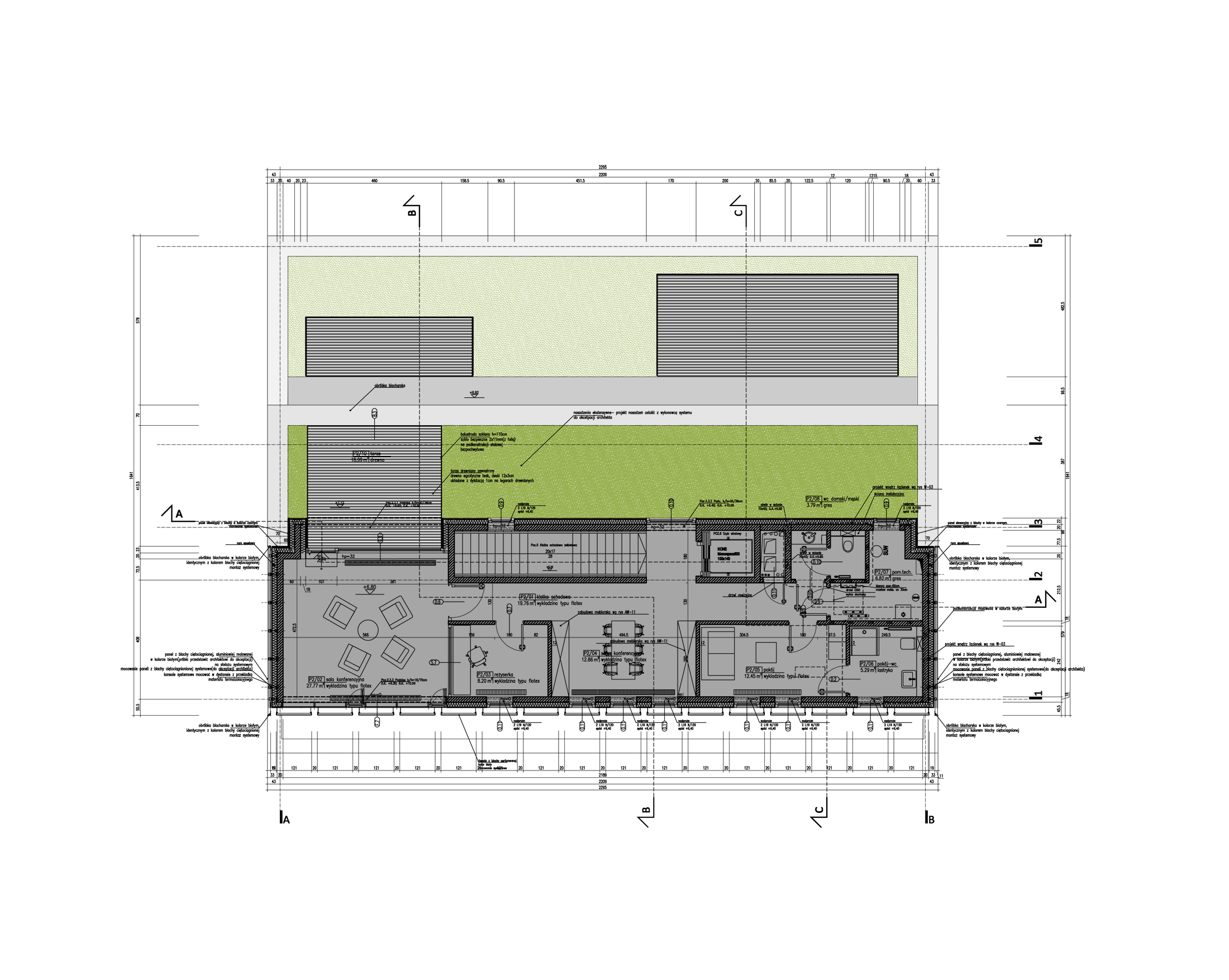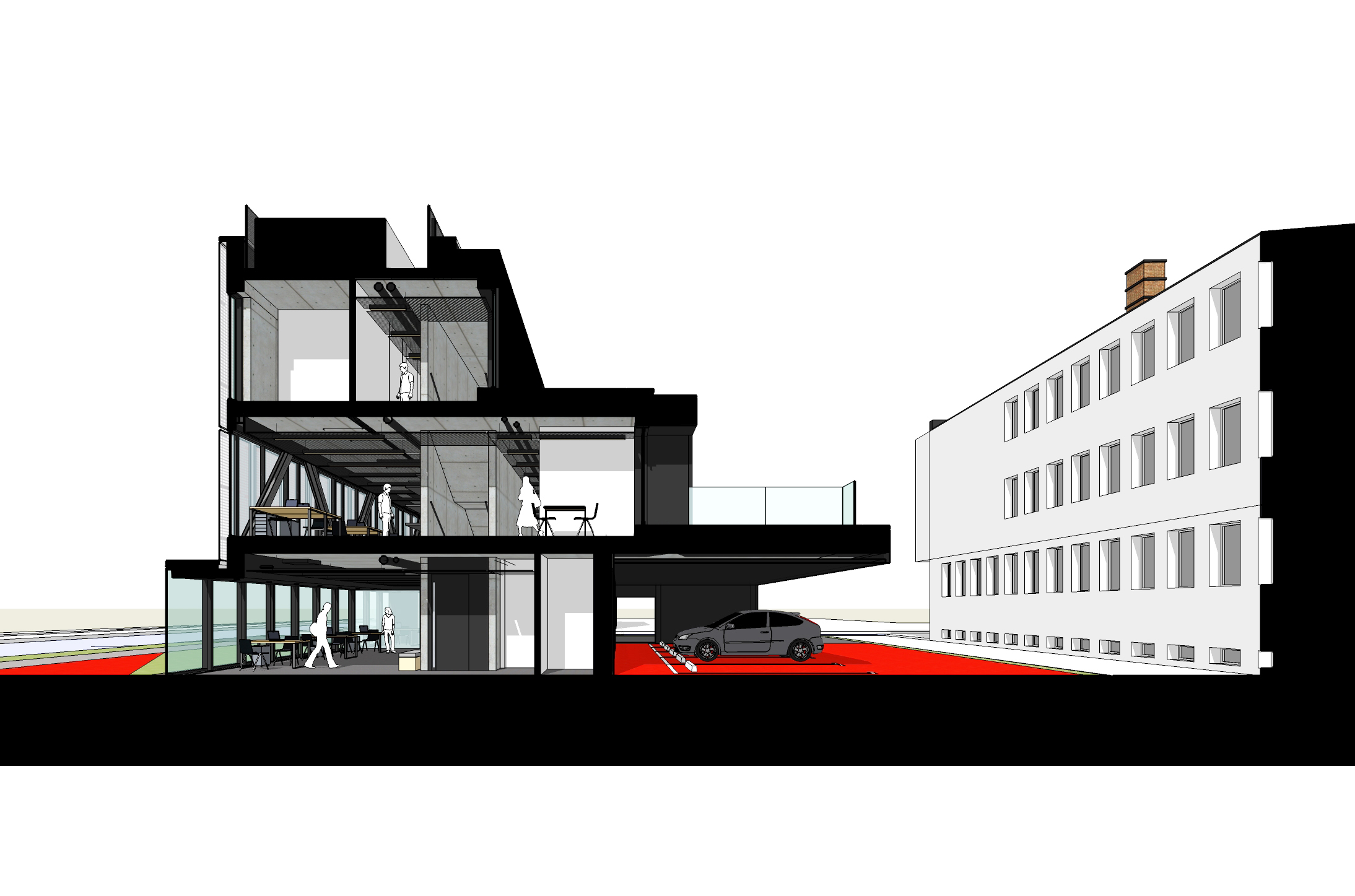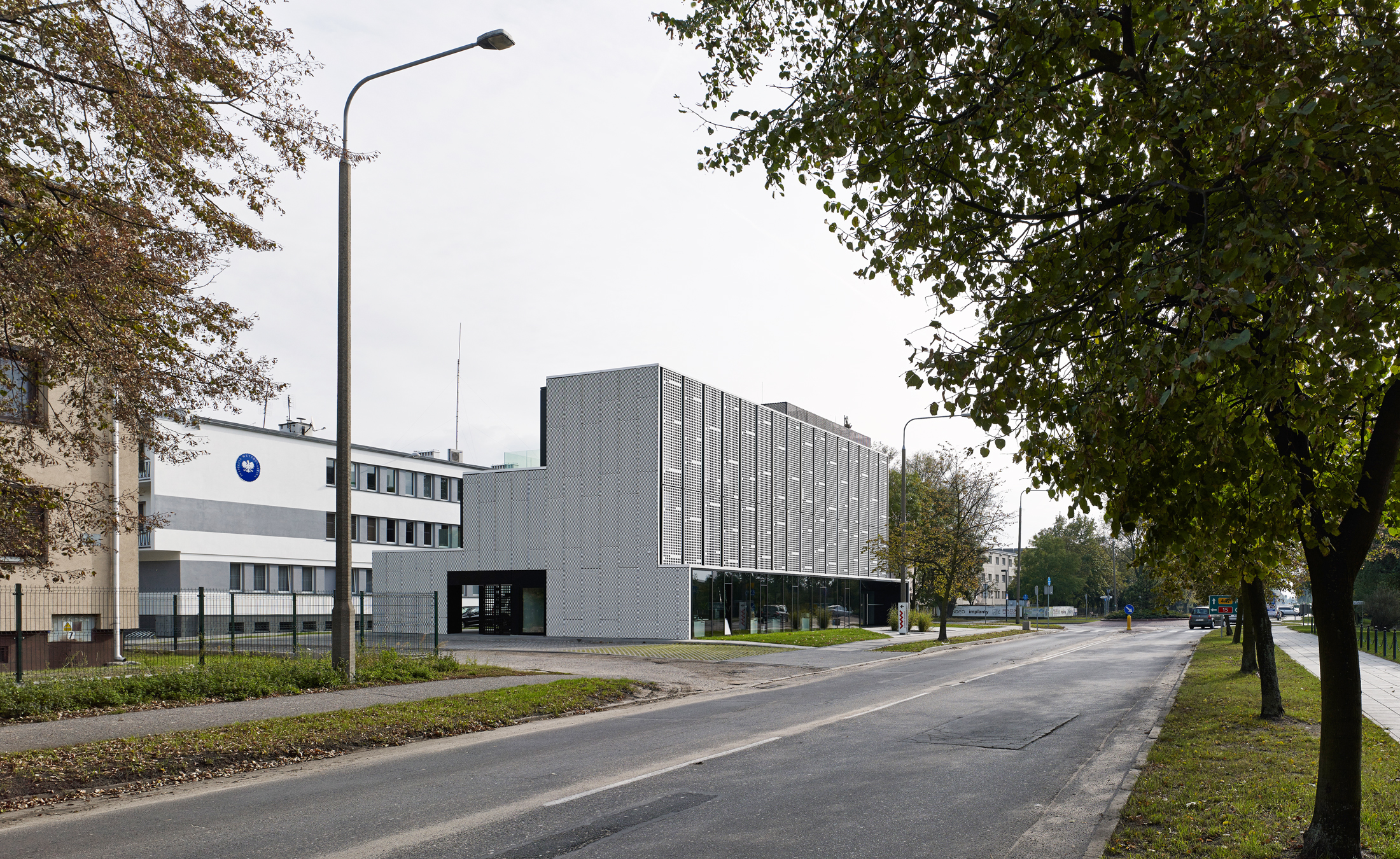Lump
The shape of the building has been determined by its functional programme. The terrace-shaped mass is a response to the needs of the various zones of the publishing house.
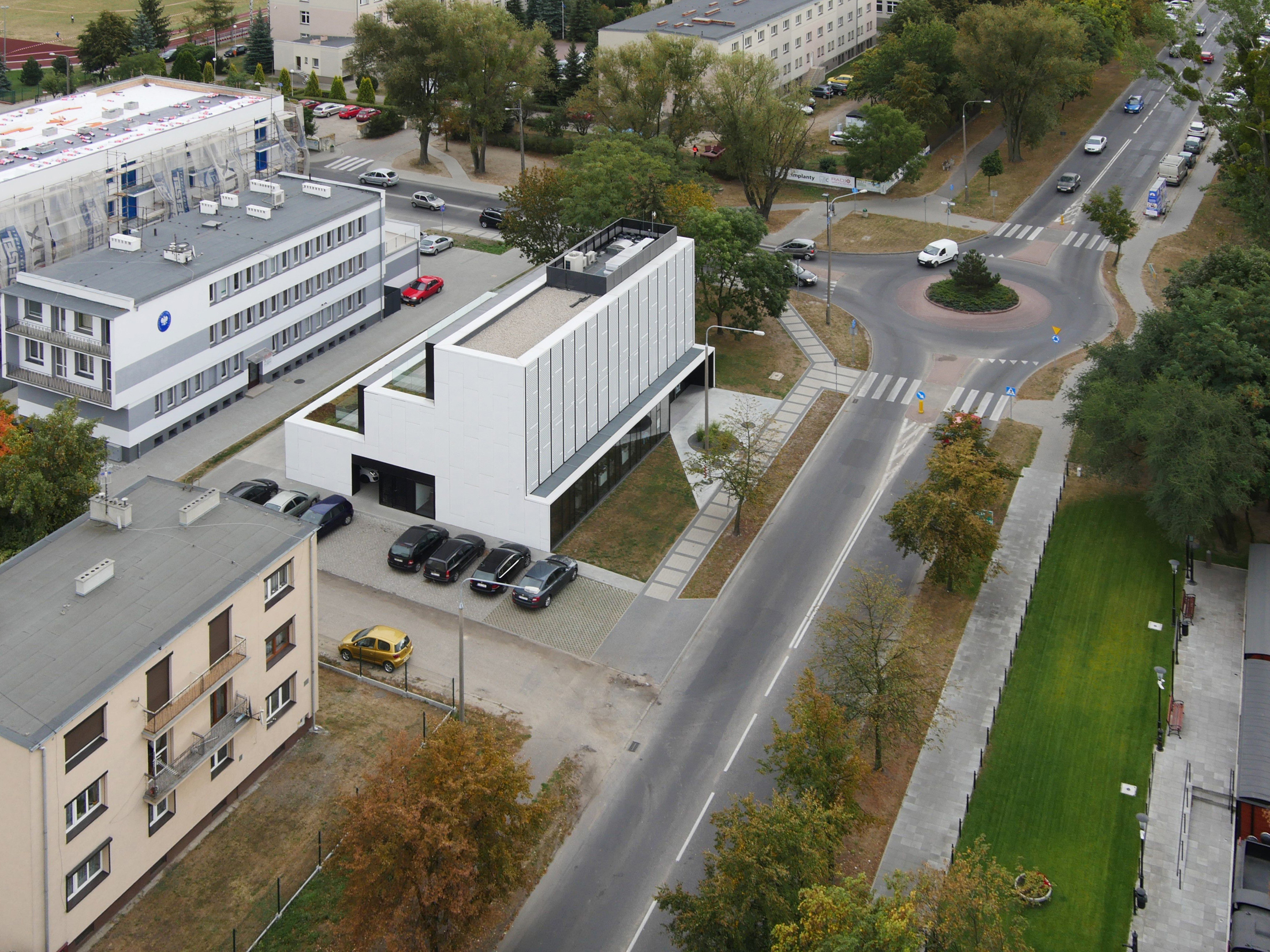
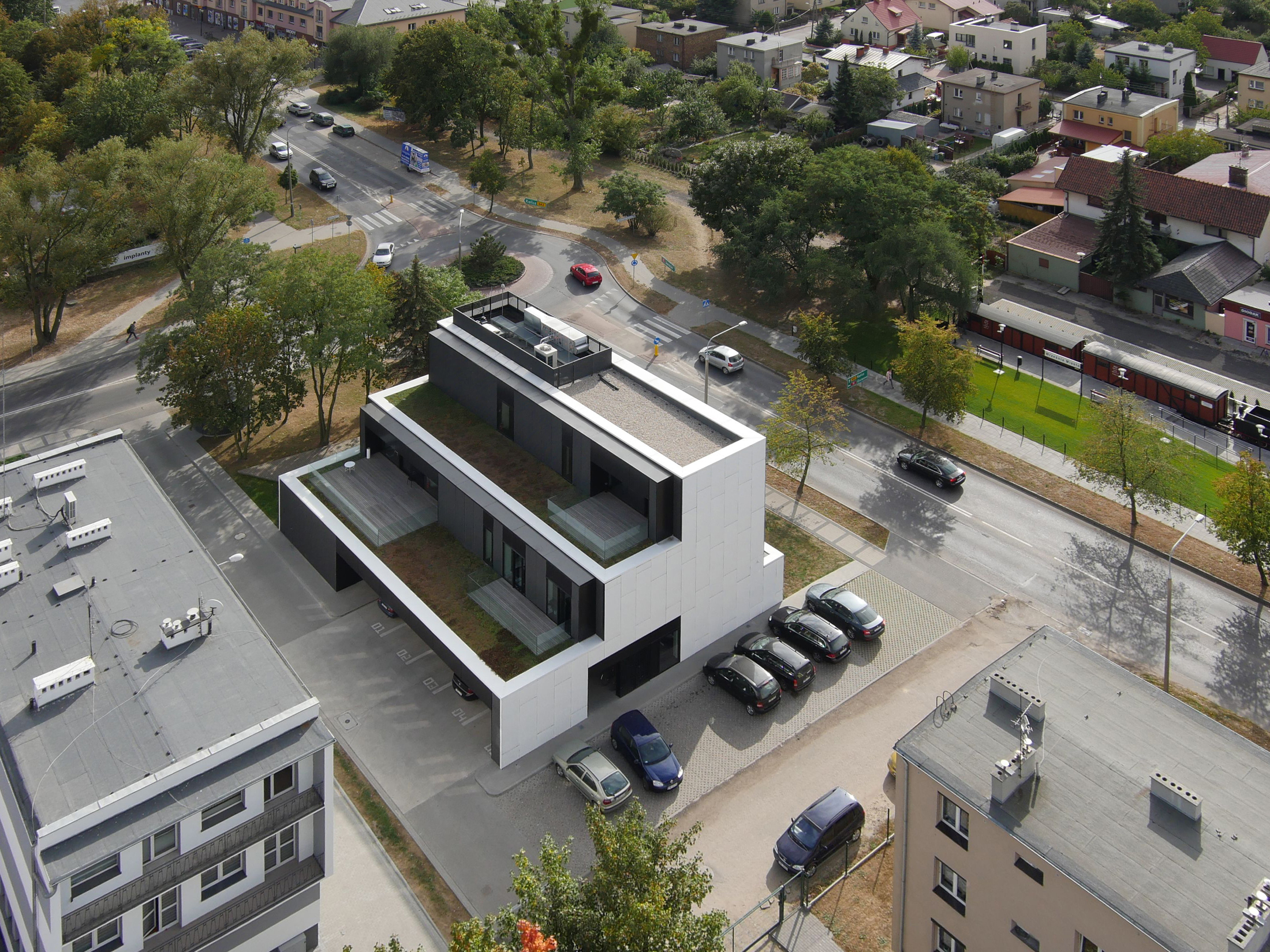
Function / Ground floor
As a public area, the ground floor houses the customer service office, a conference room with facilities, a café and a small car park with five parking spaces and space for bicycles. As it has the most extensive functional programme, it has the largest surface area. Due to its function, it is also the most open part of the building, its façade is glazed and covered by a small canopy, which creates a friendly entrance area.
Photos: Dawid Majewski Photo / Photography Przemysław Turlej
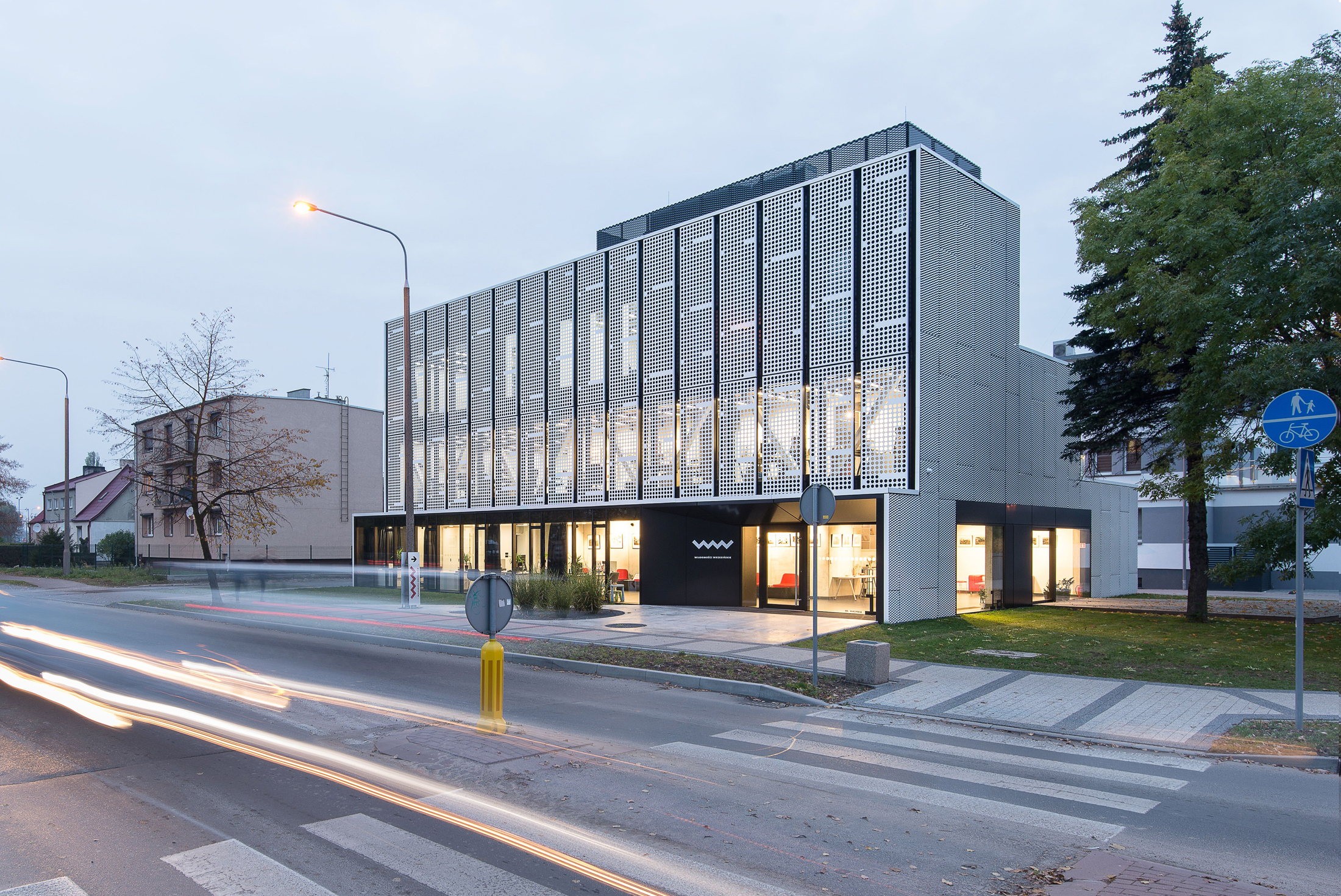
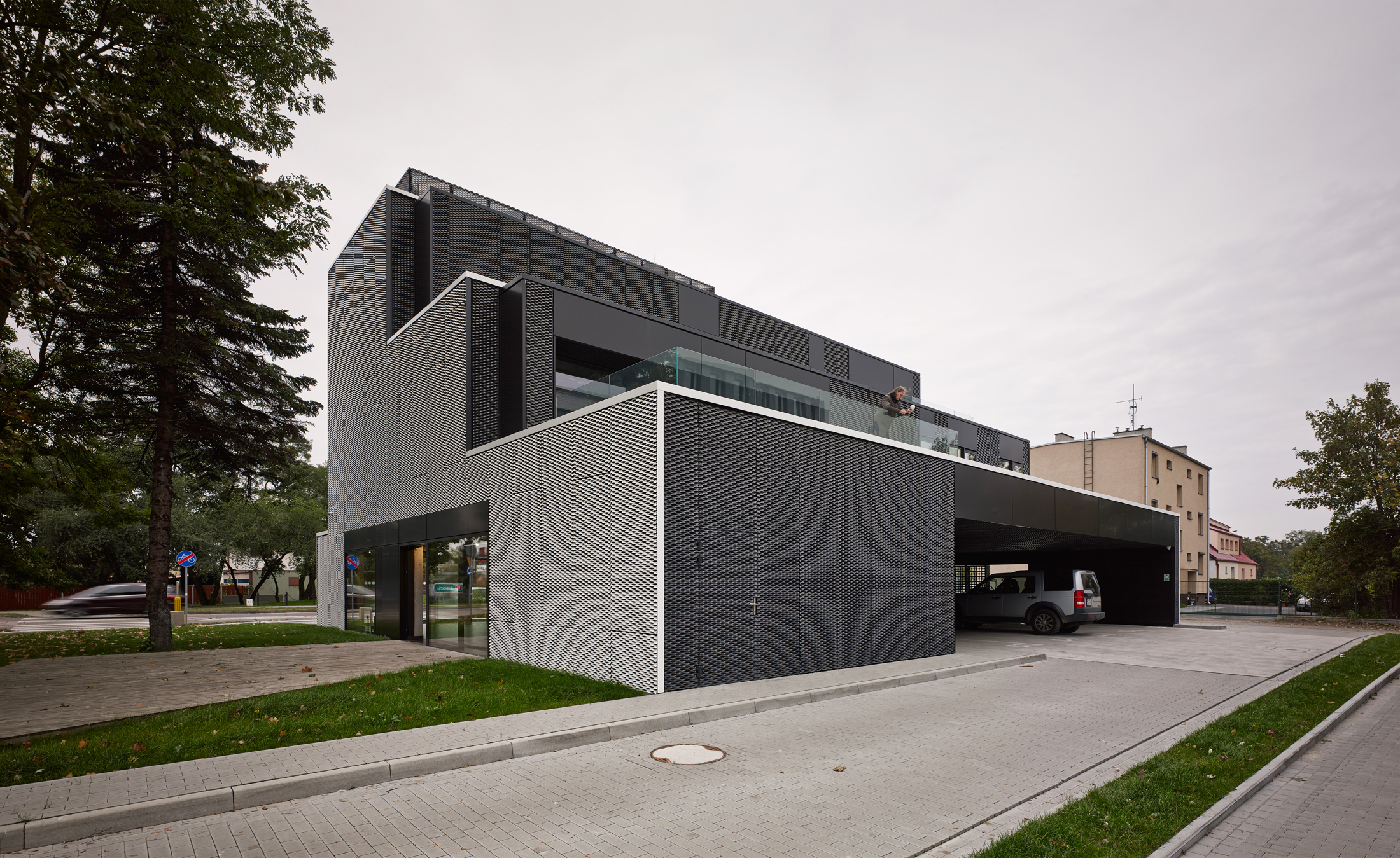
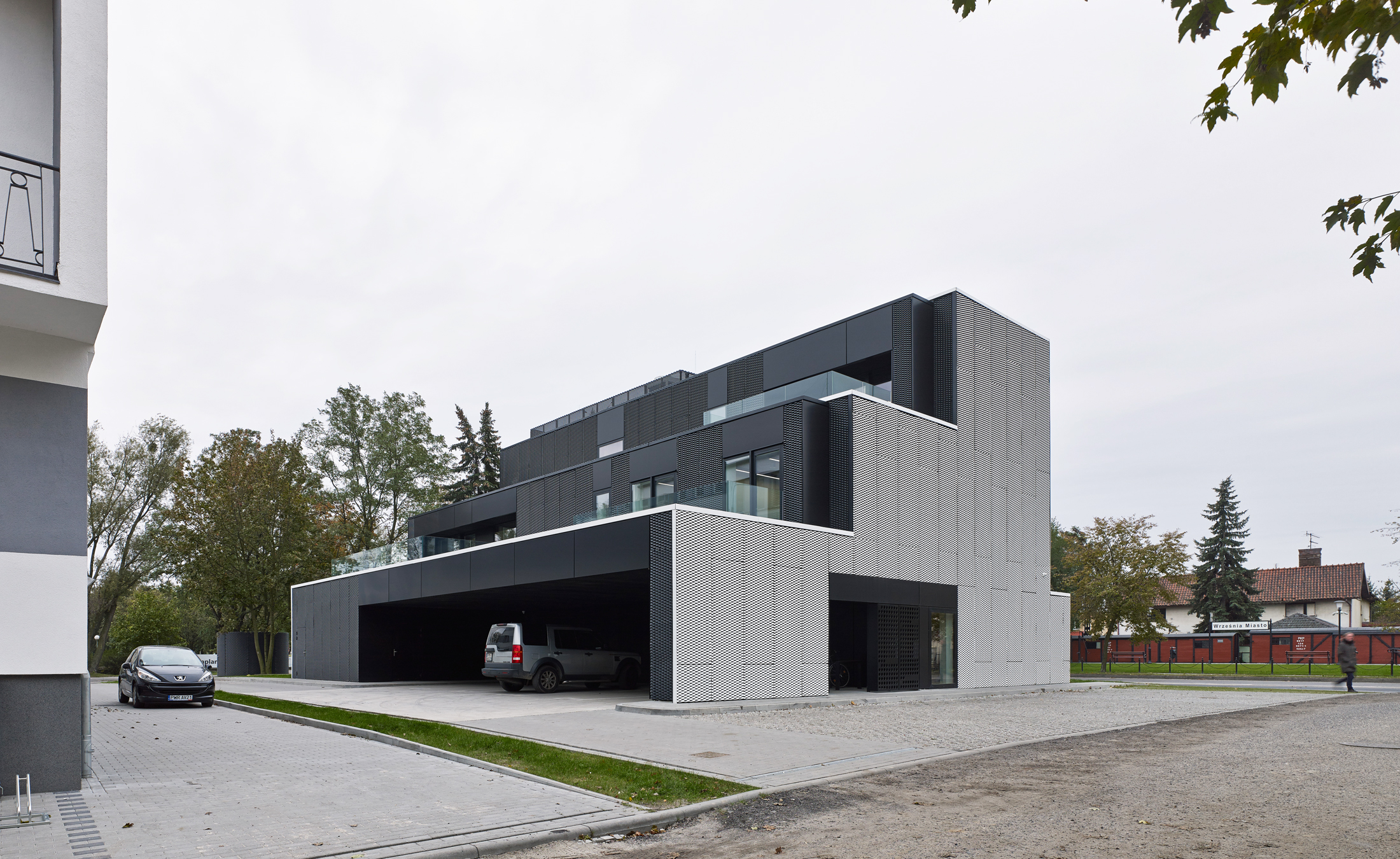
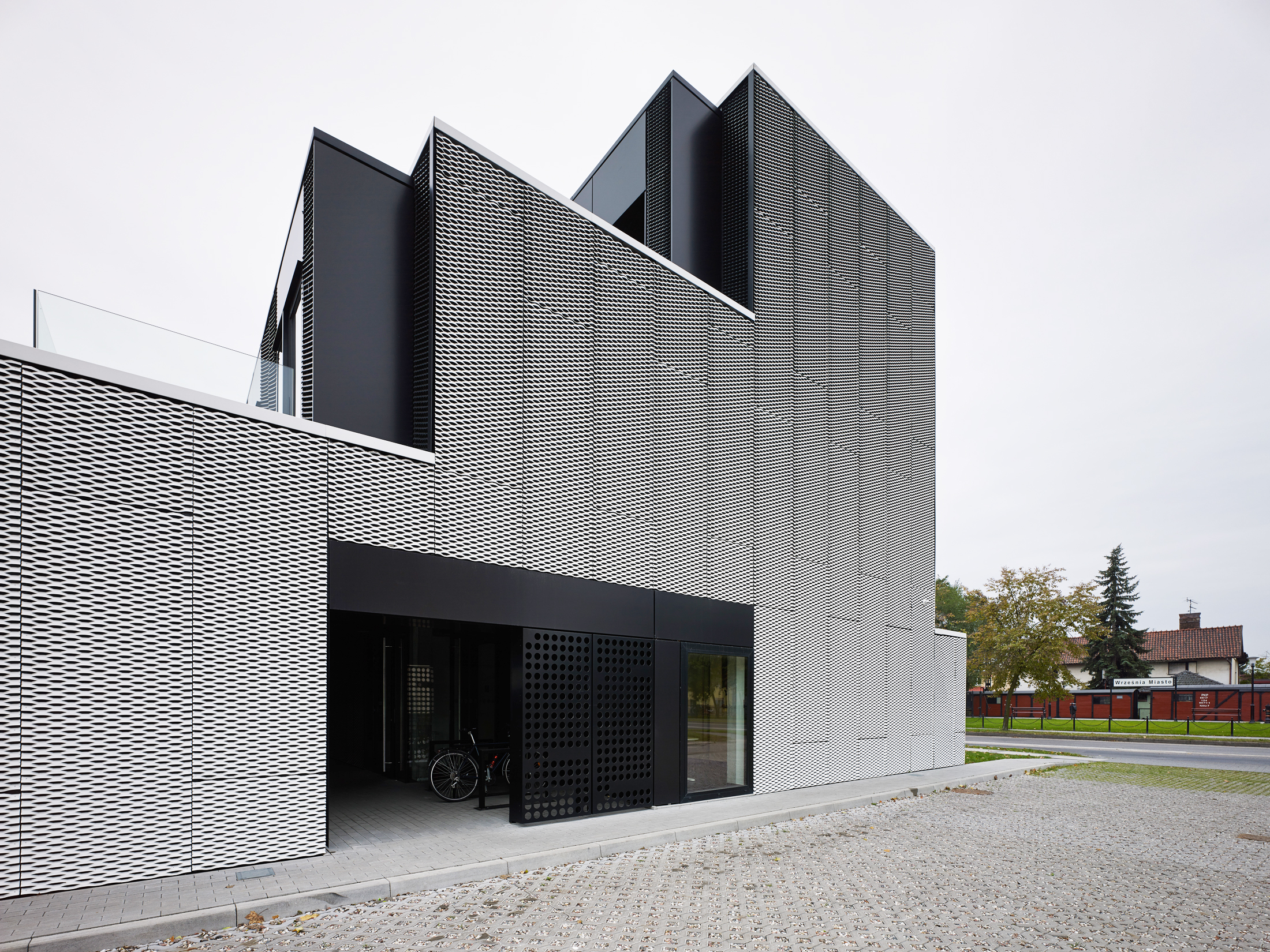
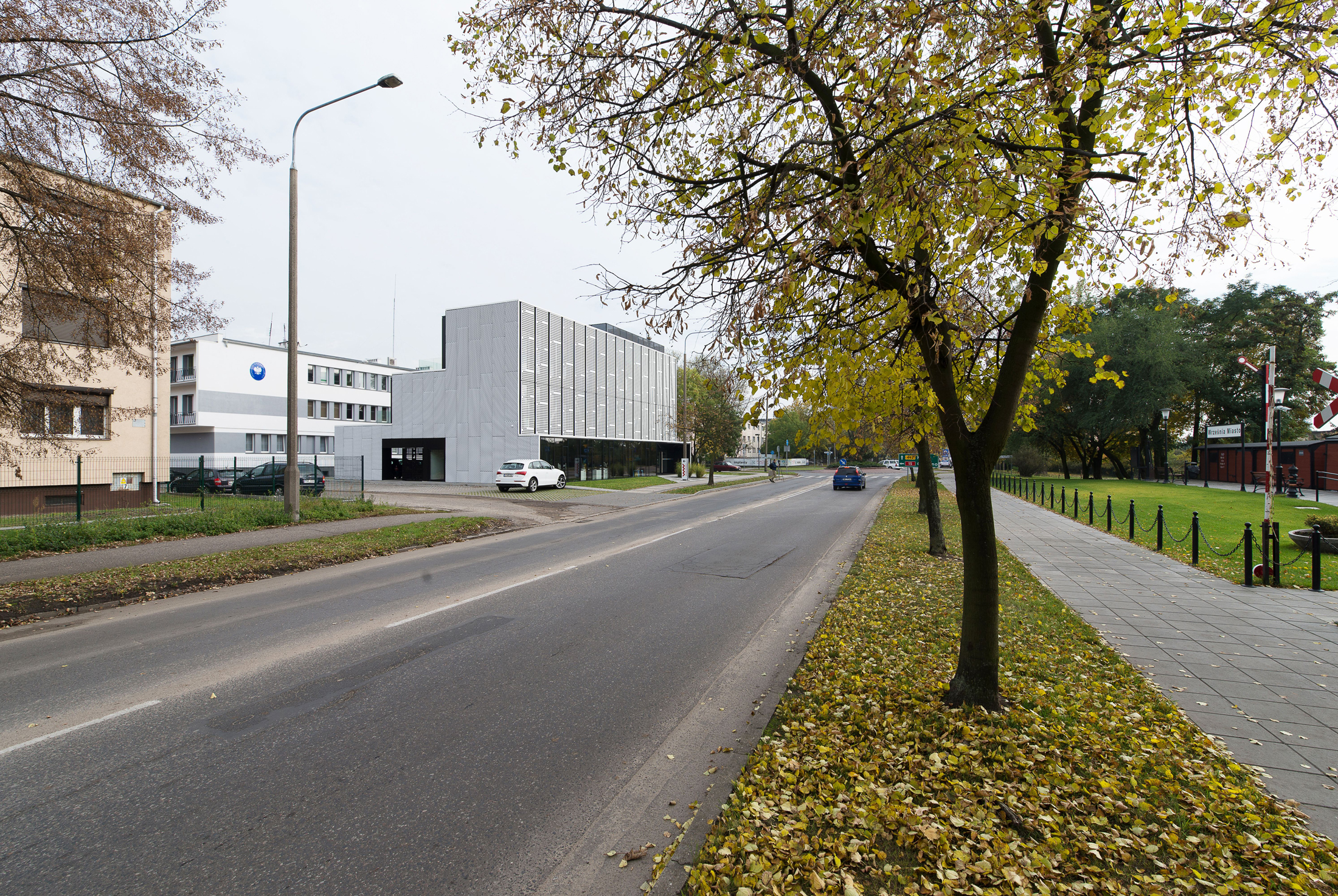
Function / Floor
The first floor, which is slightly smaller than the ground floor, will house the editorial offices. Designing this part of the building was the biggest challenge, as we had to combine two different assumptions. The first one is openness and transparency of journalism, while the second is a prosaic matter related to the nature of this work. Journalists spend most of their time in front of computer screens and in order to provide them with comfortable conditions, we had to limit the amount of light entering the interiors. On the north side are the editors' rooms, a small dining room and a conference room.
The top, second floor of the building will house a web TV studio with a control room, a small guest room and a technical area. The studio's terrace will offer a panoramic view of the city.
Thanks to the faultless shape of the body of the building, terraces overgrown with greenery will be created where successive storeys are withdrawn. It will create a friendly recreational space, being at the same time a tribute to ecology, greenery is a natural air filter, and also absorbs rainwater, reducing the amount of rainwater discharged into the municipal sewer system.
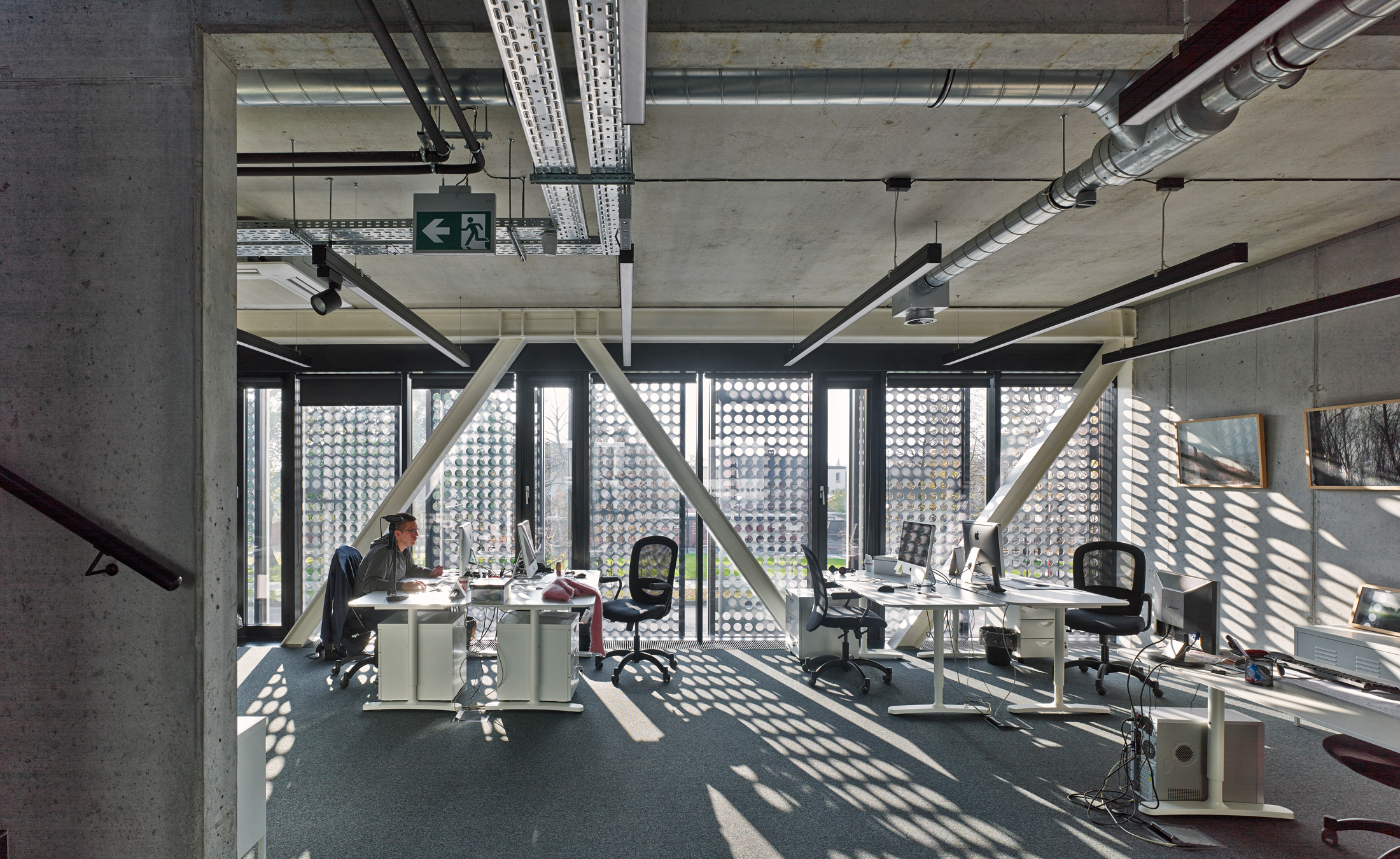
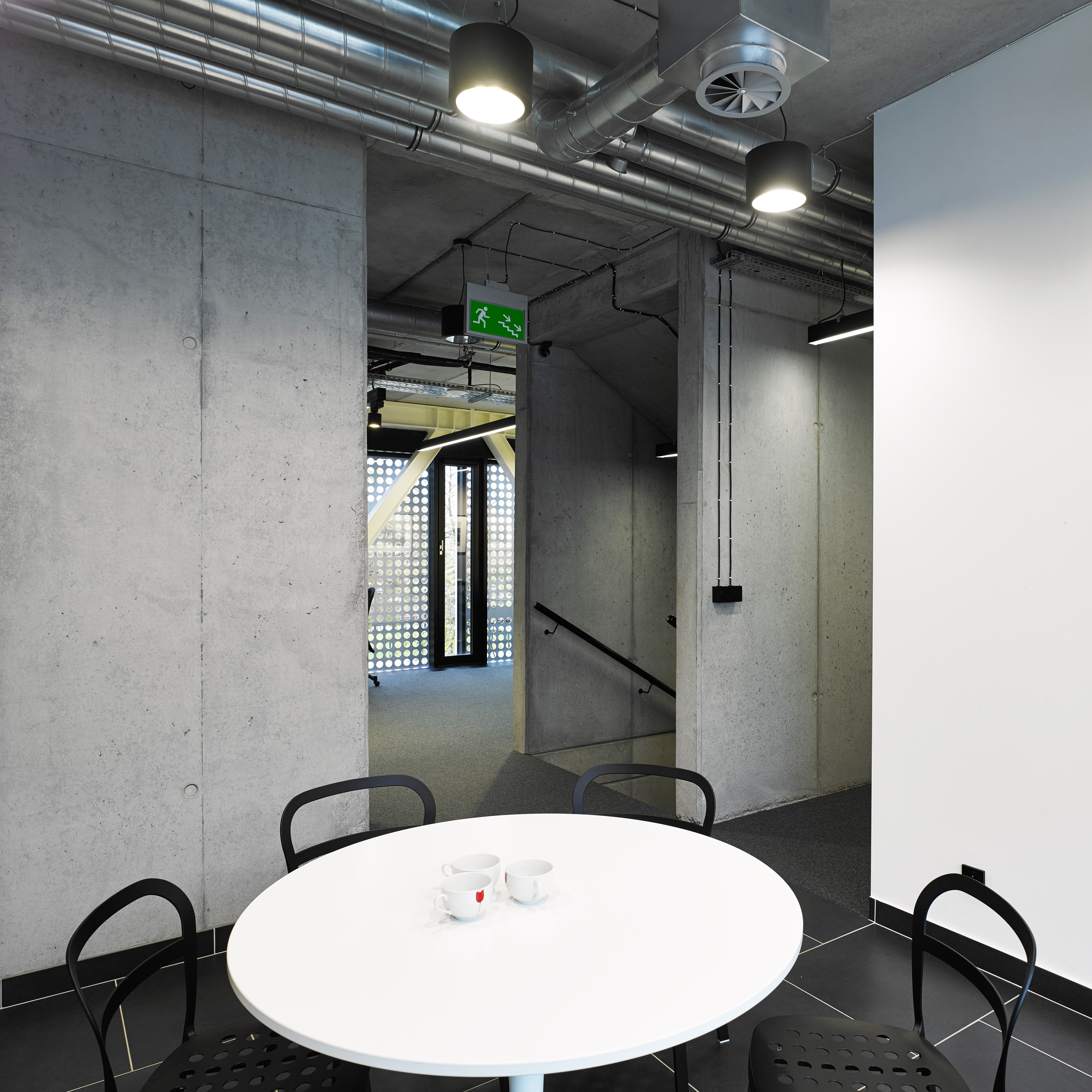
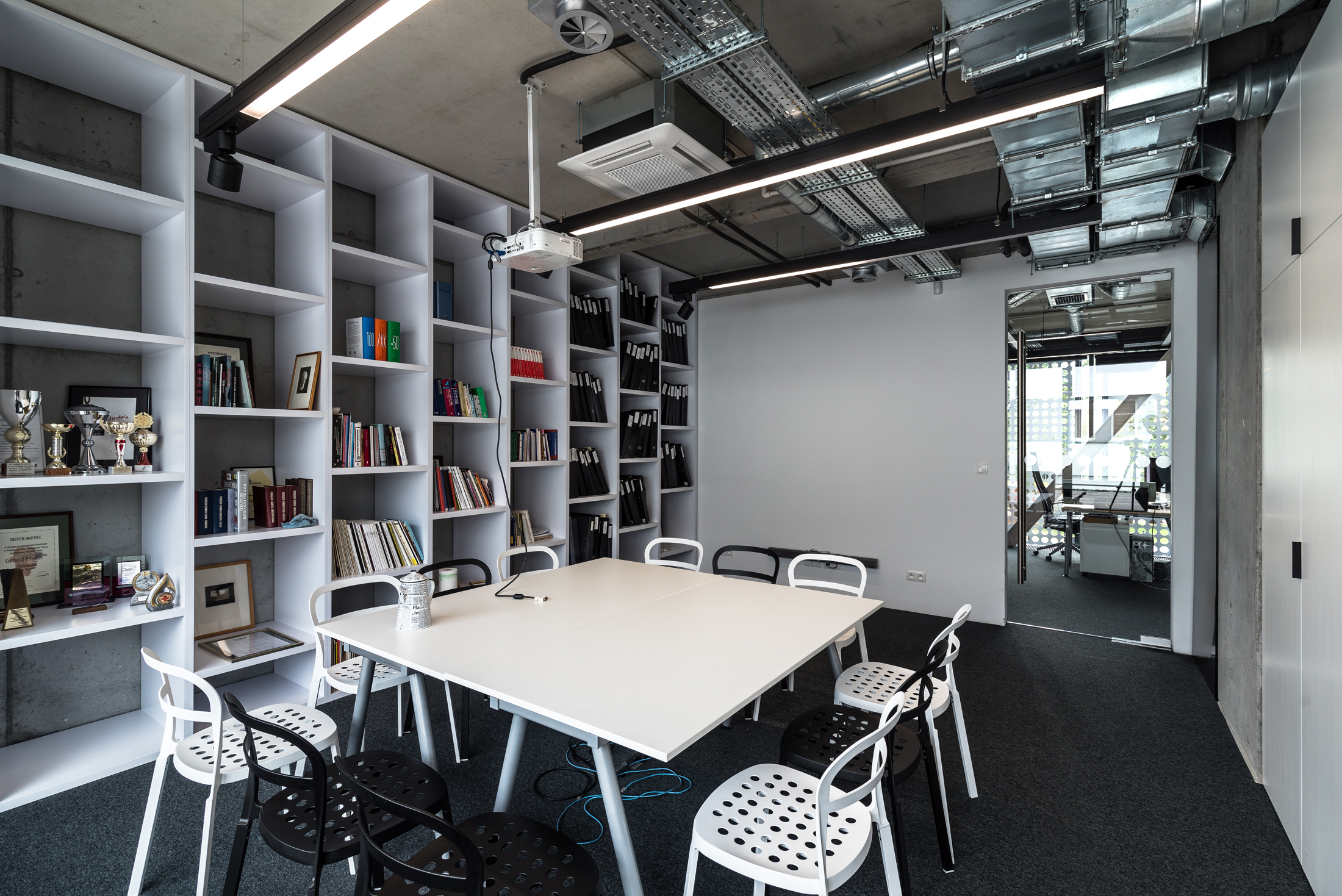
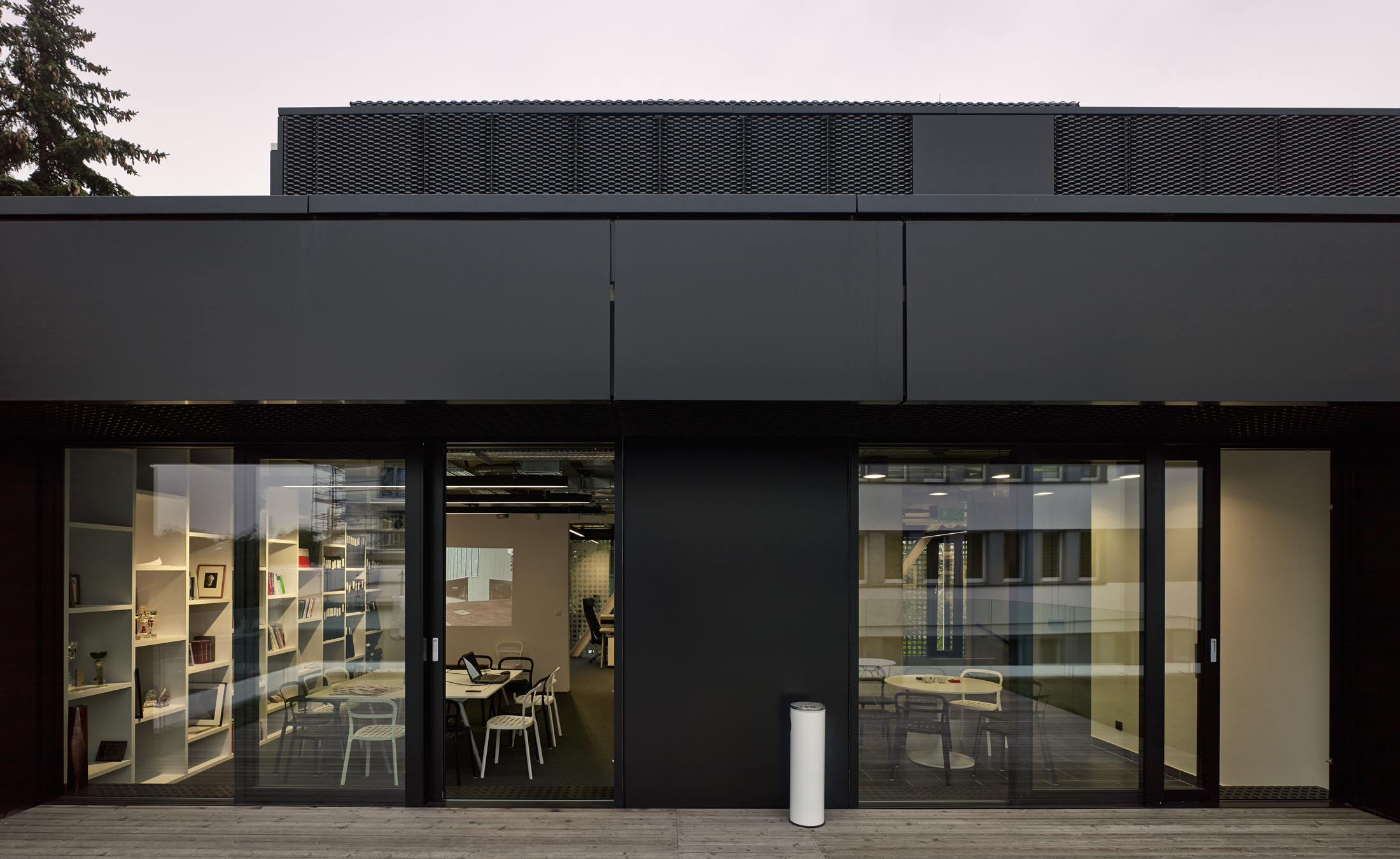
Facade
All these rooms have access to the outside terraces. The open space with the journalists' workstations, on the other hand, occupies the southern part of the floor. That is why we decided to cover the façade of the building with perforated sunscreen panels. The perforation pattern of these panels is inspired by the letters of a newspaper, so the practical screen will at the same time serve as the building's visual identity. The perforated façade, which is intended to provide protection from excessive light during the day, will be almost invisible at night. Illuminated from inside, the building will thus remain alive until late in the evening, as long as work continues. The choice of façade cladding has also been dictated by future expansion plans; it will enable a seamless connection between the old and new parts of the office building, while at the same time preserving its contemporary appearance.
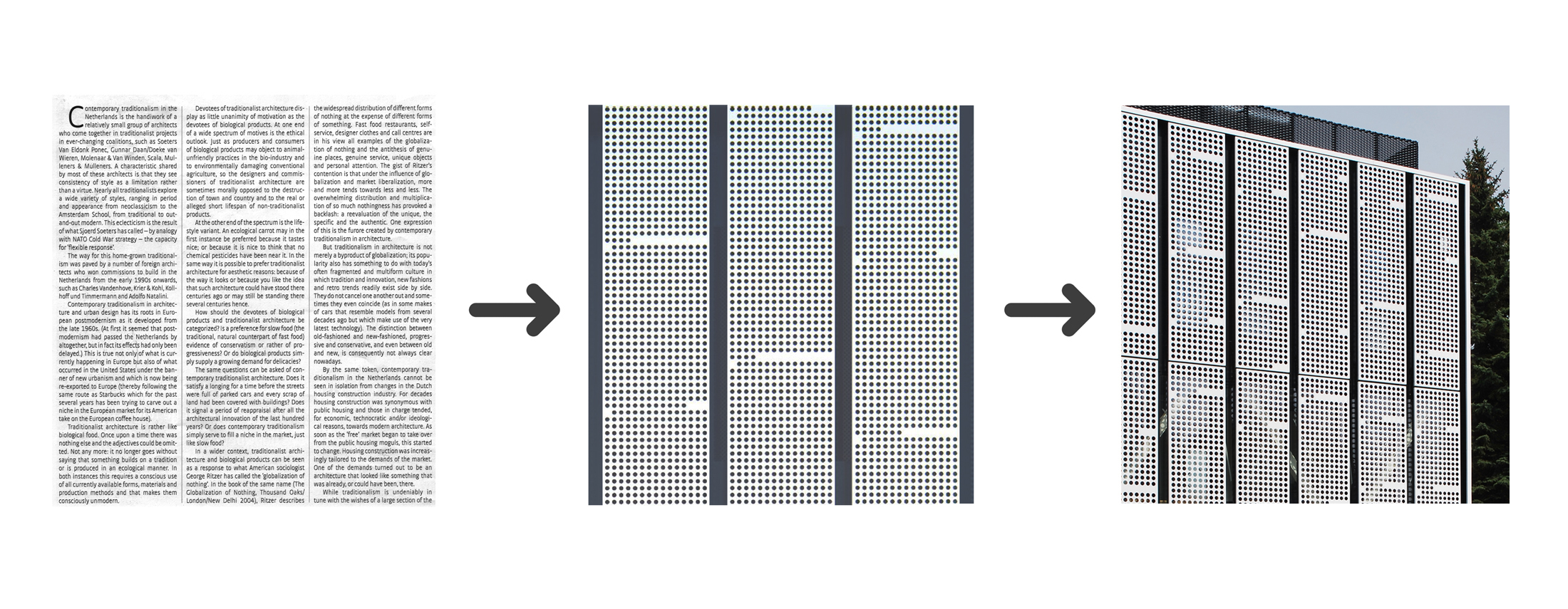
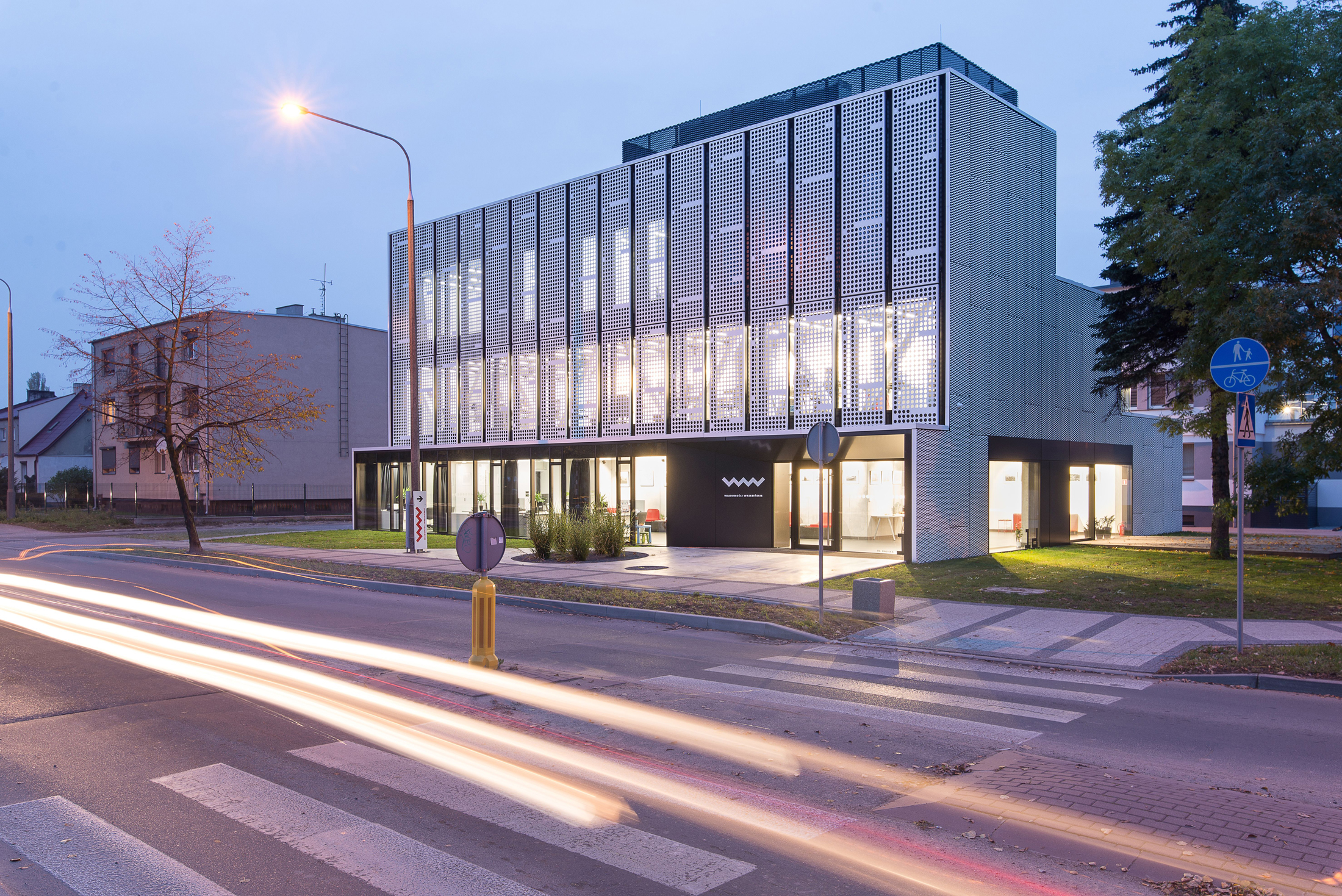
Function / Second floor
The top, second floor of the building will house a web TV studio with a director's office, a small guest room and a technical area. The studio's terrace will offer a panoramic view of the city.
Thanks to the faultless shape of the body of the building, terraces overgrown with greenery have been created where successive storeys are withdrawn. It will create a friendly recreational space, being at the same time a nod to ecology, greenery is a natural air filter and also absorbs rainwater, reducing the amount of rainwater discharged into the network of municipal sewers. Photos: Dawid Majewski Photo / Jeremi Buczkowski
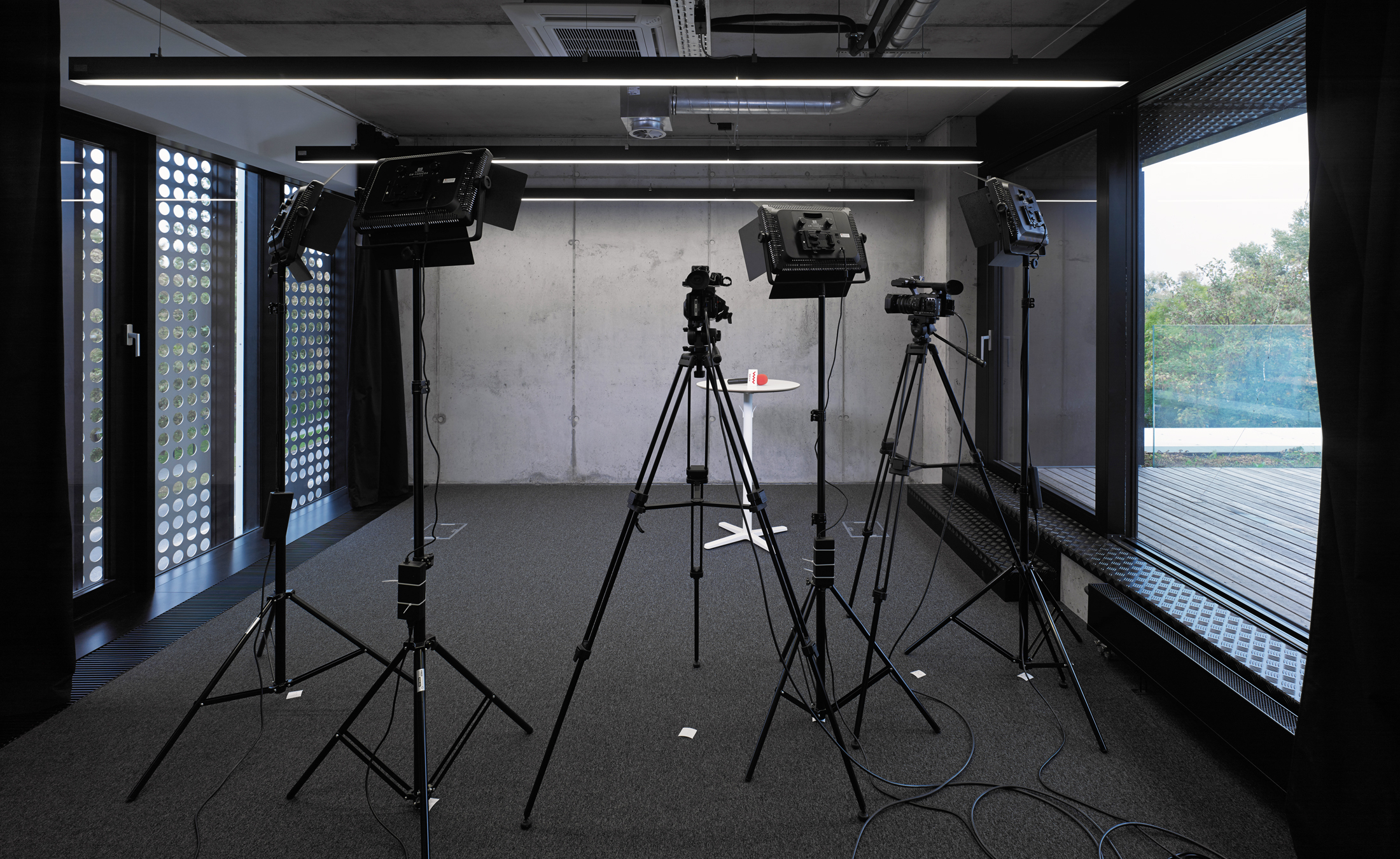

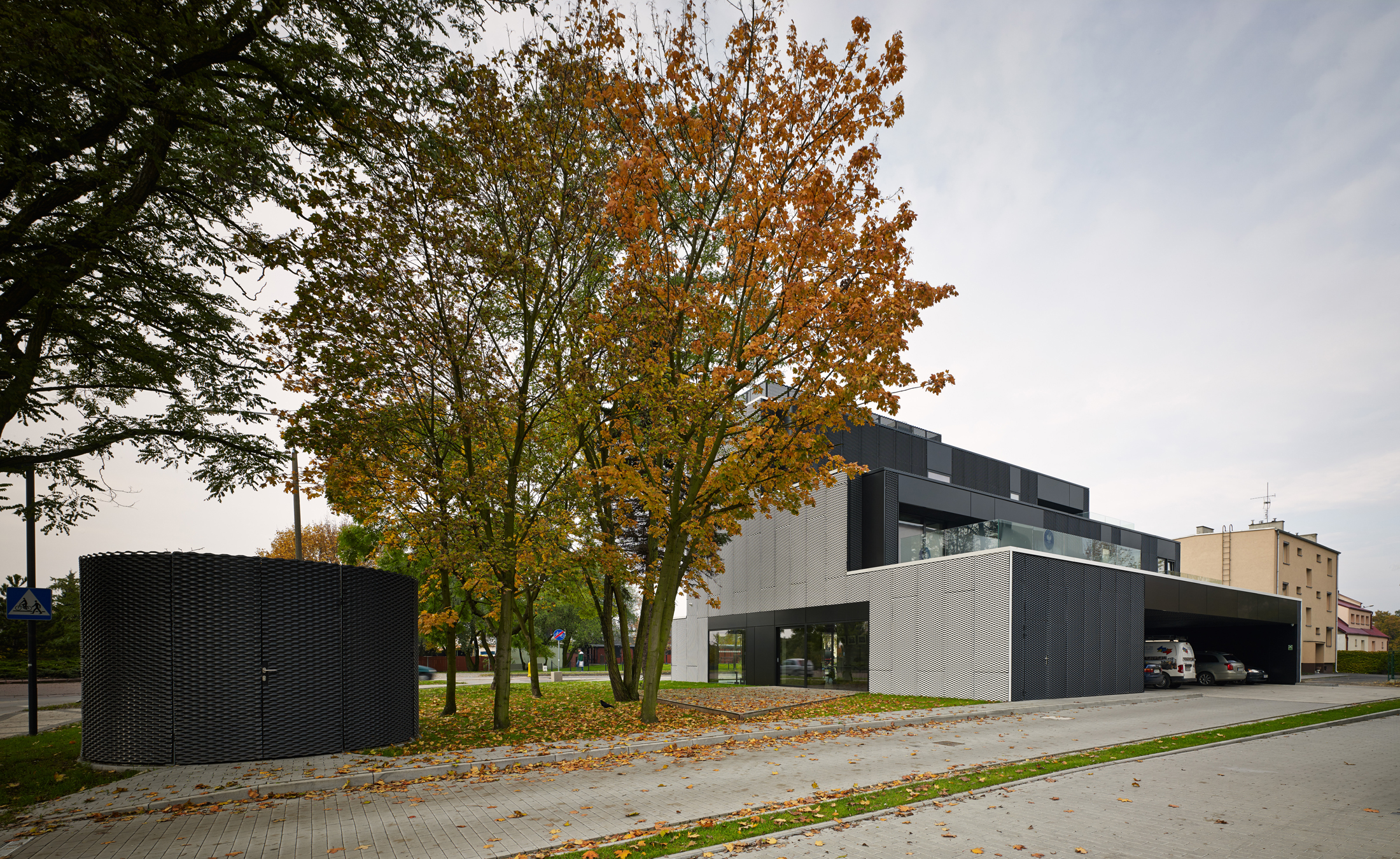
Drawings
